- Kinda like animals,
variables in a
computer program has a
life time:
- A variable is
created ("born") at a
certain moment
- It exists for some time while
the computer program is
executing....
- And then the variable ceases to exist
- A variable is
created ("born") at a
certain moment
- Previously discussed:
- A variable in a
running computer program is in fact
a memory cell
(See: click here )
- Creating a variable = reserve memory space for a variable (See: click here )
- A variable in a
running computer program is in fact
a memory cell
(See: click here )
- Computer Science Jargon:
- Destroying a variable =
reclaim the reserved memory space
occupied by a variable
When the reserved memory space taken up by a variable is reclaimed, that variable will cease to exist
- Destroying a variable =
reclaim the reserved memory space
occupied by a variable
- Definition:
the life time of a
variable:
- Life time of a variable = the duration between the moment when a variable is created and the moment when a variable is destroyed
- Moment of creation (of a local variable):
- A local variable is created at the moment that the program execution reaches the definition of the local variable
- Moment of destruction (of a local variable):
- A local variable is destroyed at the moment that the program execution reaches the end of the method in which the local variable is defined
- Consider the following program:
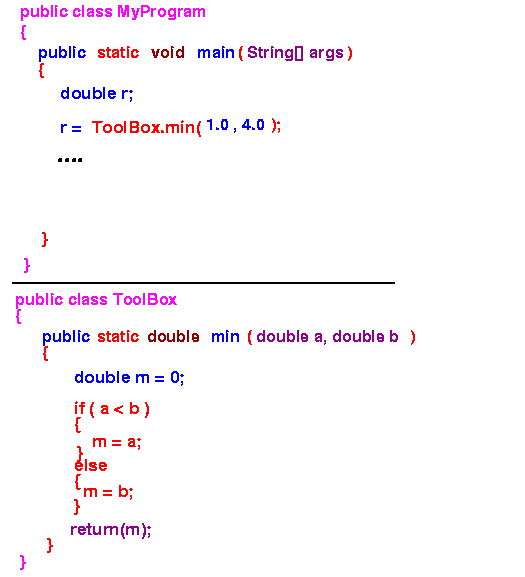
- When the program starts to
run, the RAM memory contains
only the
program instructions:

- The program starts to run
with the main method.
The current program location is given by a green arrow:

Note:
- There are 2 dark green arrows
in the figure.
- The arrow in the
left figure points to
the current program location in
the
human readable Java program
The Java program must be compiled (translated) into machine instruction to be executed.
- The Java program is given to help you follow what the computer will do
- The arrow in the
right figure points to
the current program location in
the
machine instructions program
- The machine instruction program is the actual program that is executed by the computer !!!
- There are 2 dark green arrows
in the figure.
- Here is how the
local variables are
created and destroyed:
- When the computer encounters the
definition of
the local variable r,
it creates it in RAM
(in other words:
reserve memory to
hold the value)
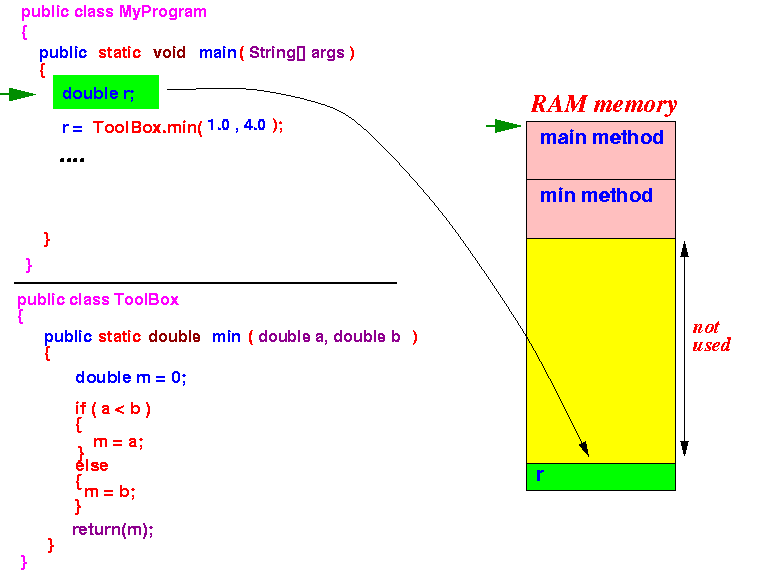
- When the computer executes the
method call, the
program execution is
transfered ,
to the
min method:
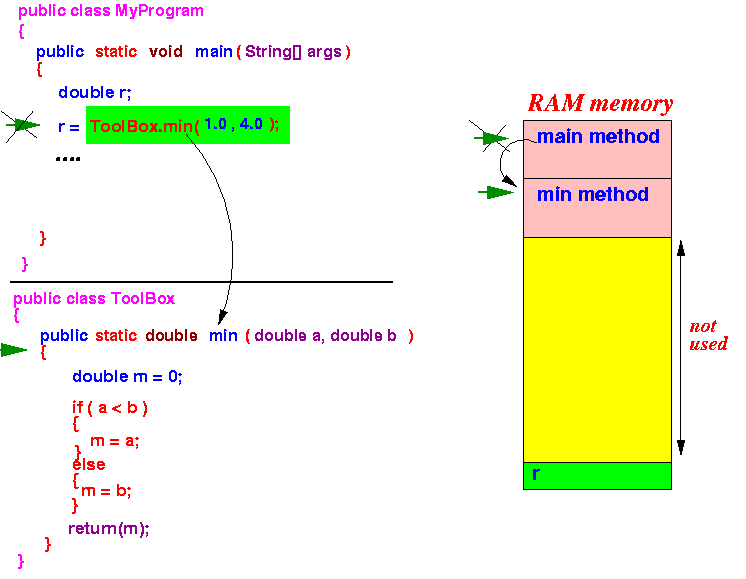
- When the computer encounters the
definition of
the local variable m,
it creates it in RAM
(in other words:
reserve memory to
hold the value)
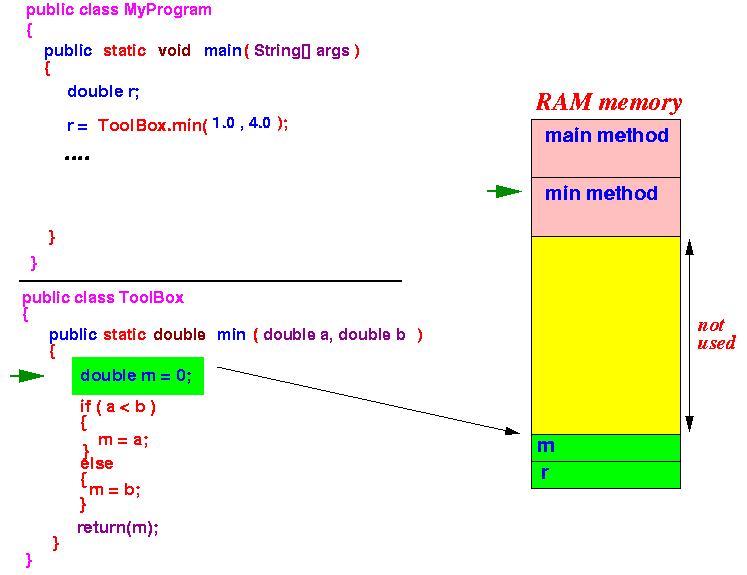
- The program execution continues to
compute the minimum of
the input values and
store it in the local variable
m:
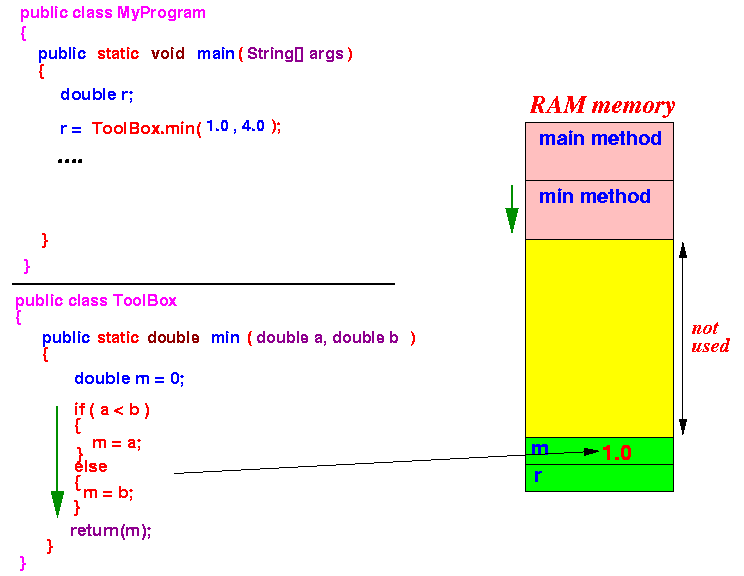
- The return(m)
statement will save the
value of variable m in
a return location:
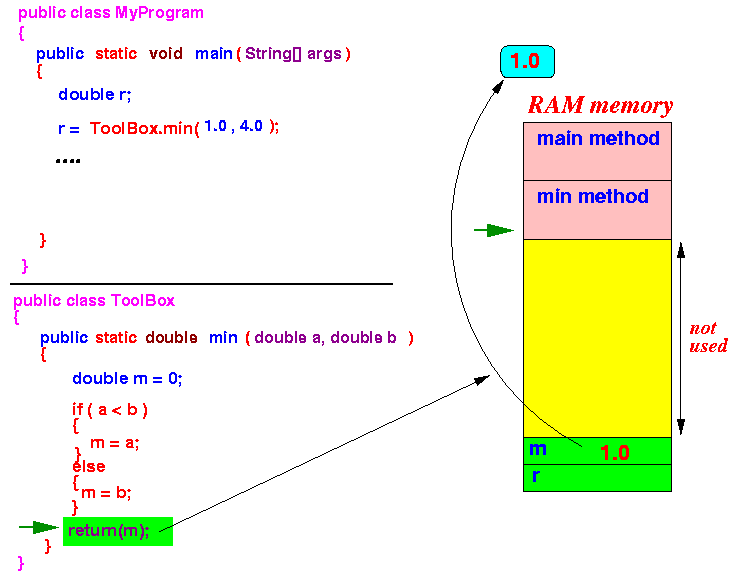
The return location is typically a general purpose register inside the CPU (Central Processing Unit)
(CPU, see: click here )
- When program execution reaches the
end of the function,
the local variable m
is destroyed:
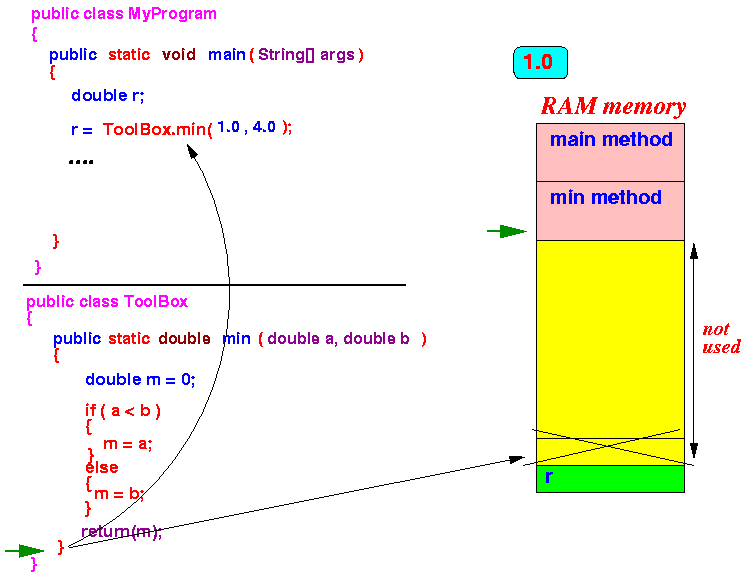
Furthermore, the program execution will be transfered back to the location of the method call.
- When program execution continues
the
location of the method call,
the assignment statement will stored the
value in the return location
to the
local variable r:
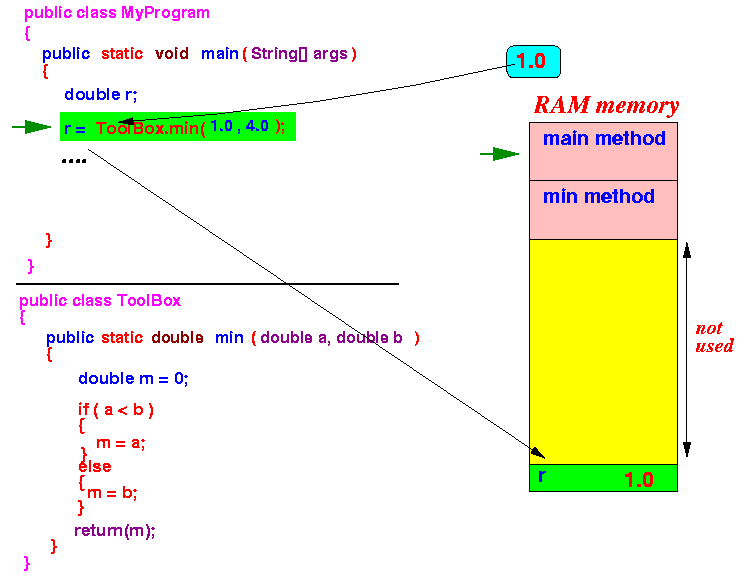
- And when the program
reaches the end of the main
method, the
local variable r
will also be
destroyed:

- When the computer encounters the
definition of
the local variable r,
it creates it in RAM
(in other words:
reserve memory to
hold the value)
- Conclusion:
- A local variable
only exists between:
- The definition of the
local variable
- The end of the method where the local variable is defined
Example 1:
- The local variable m
only exists within this
green area:
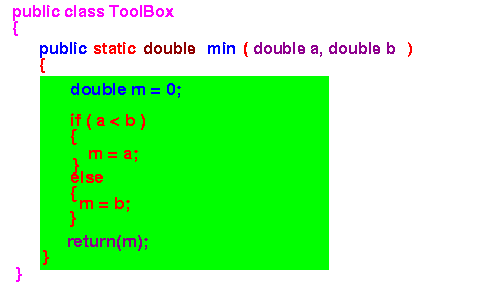
Example 2:
- The local variable r
only exists within this
green area:
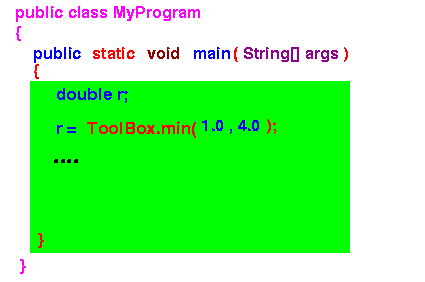
- The definition of the
local variable
- A local variable
only exists between: